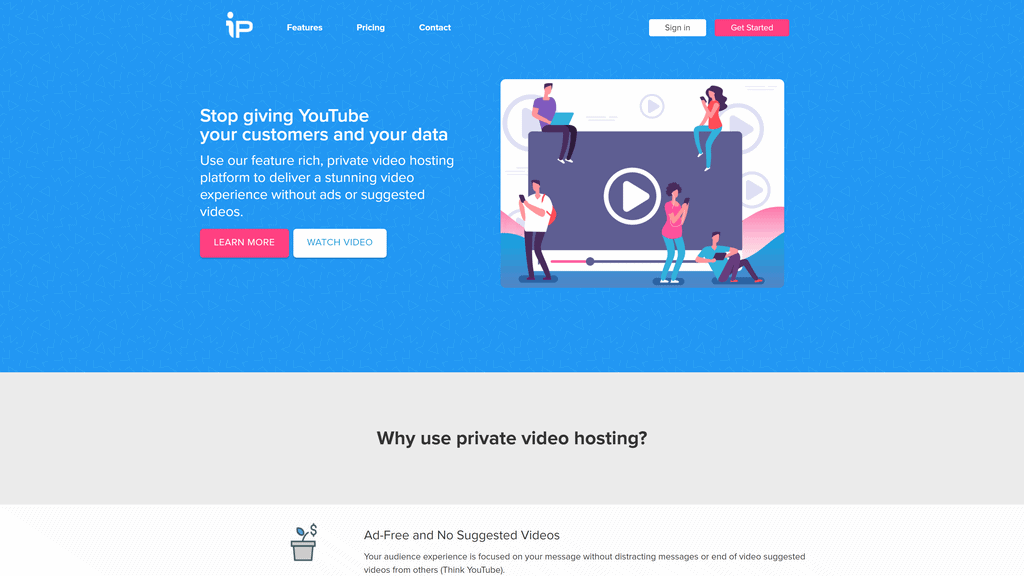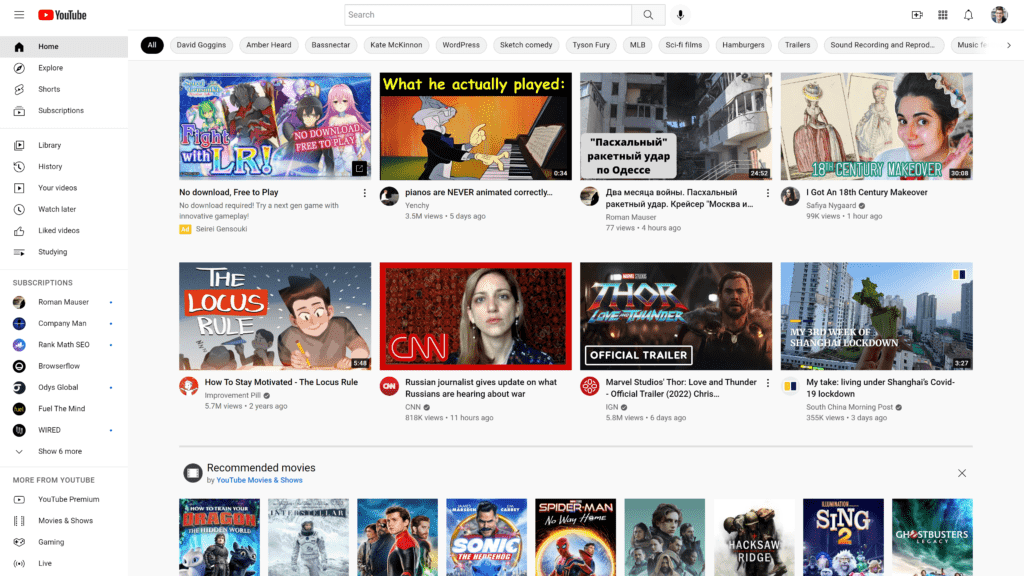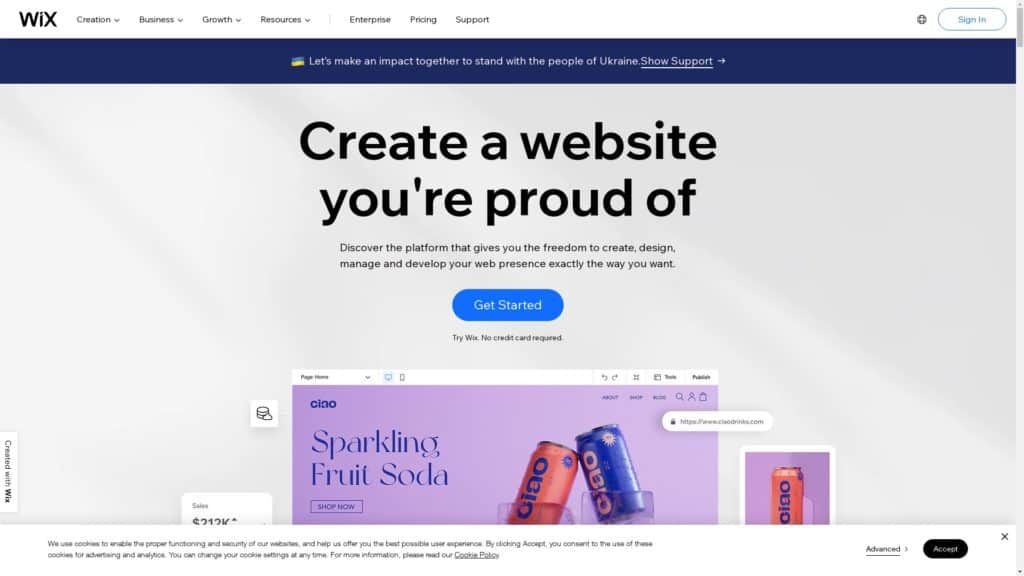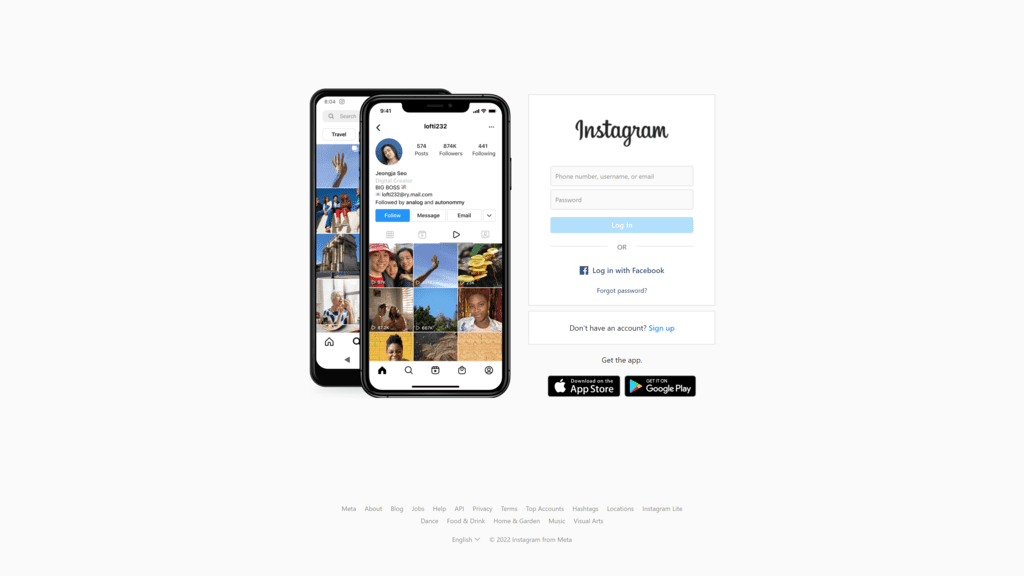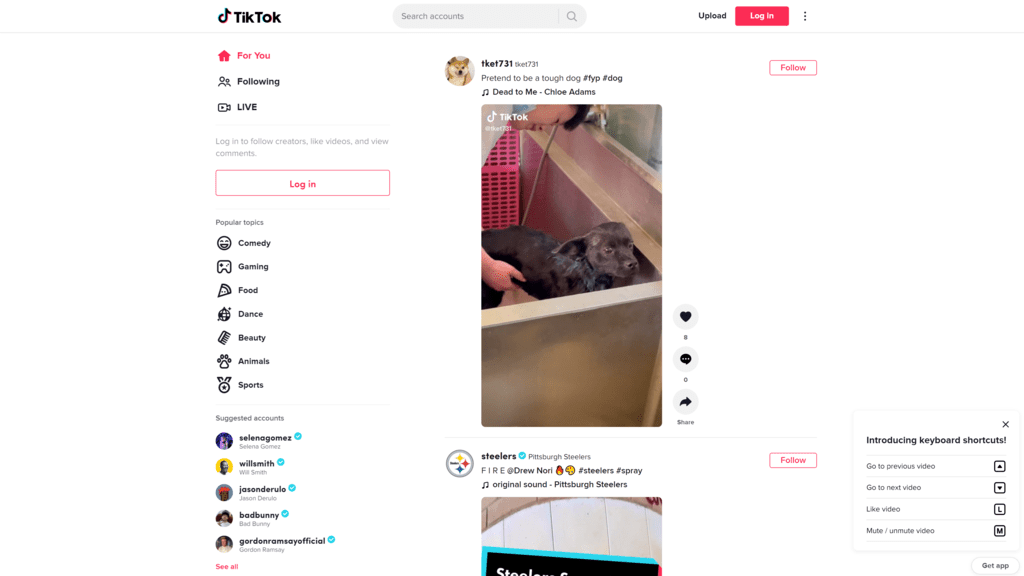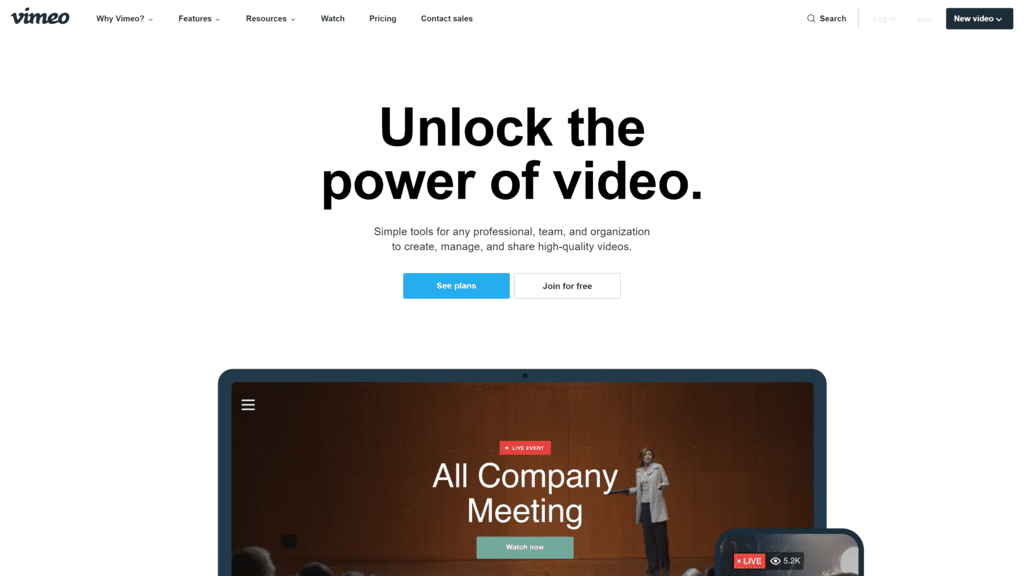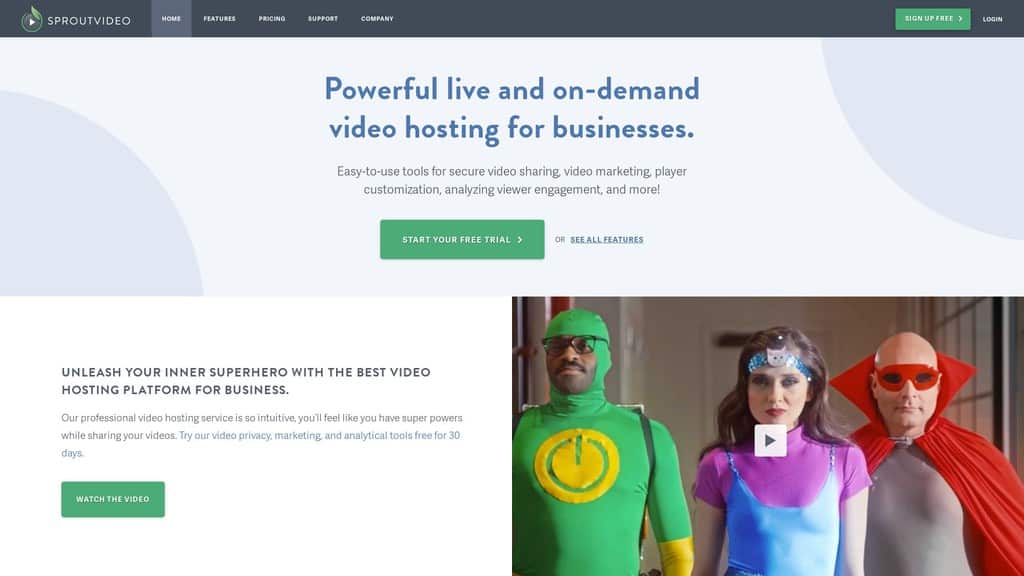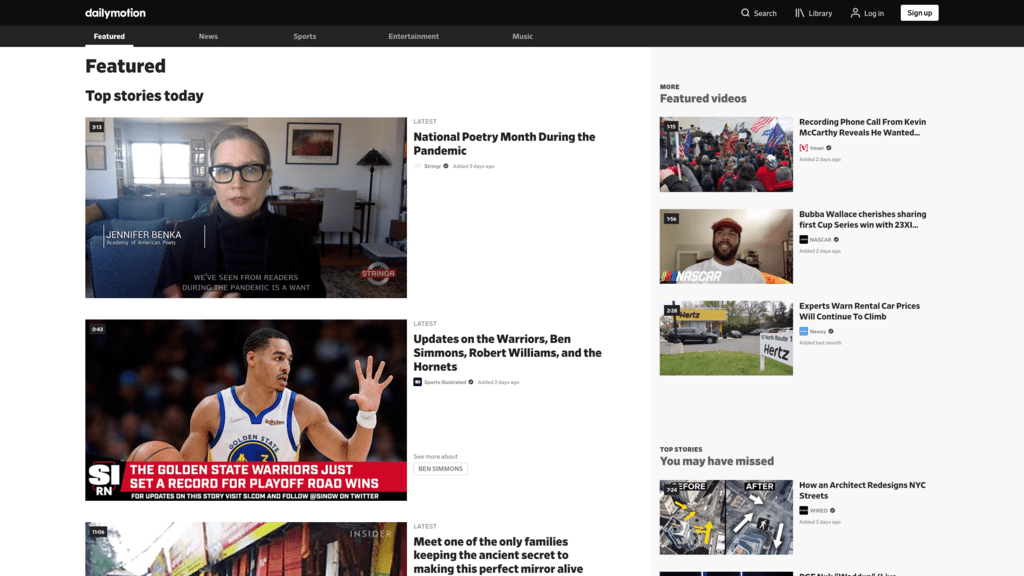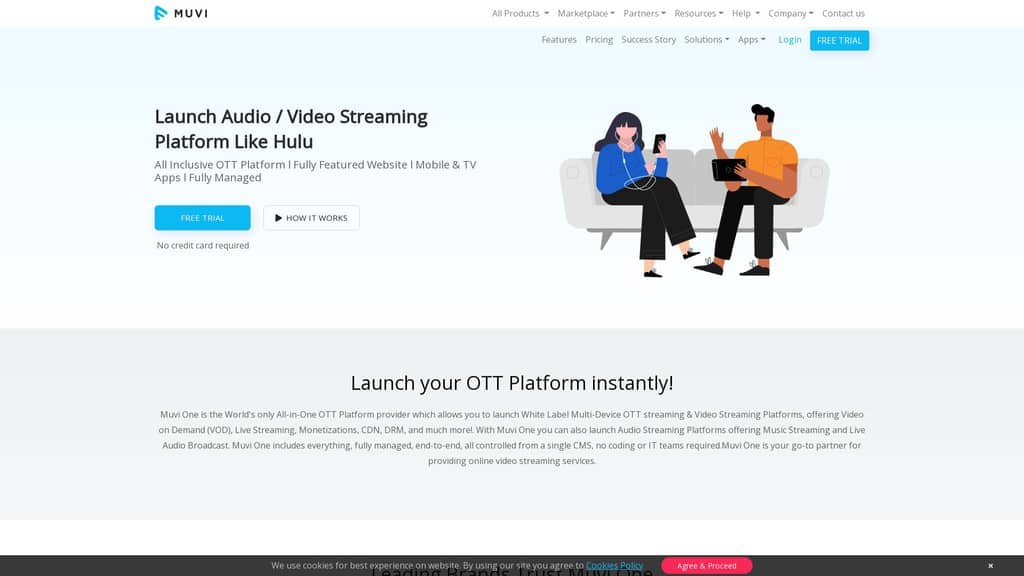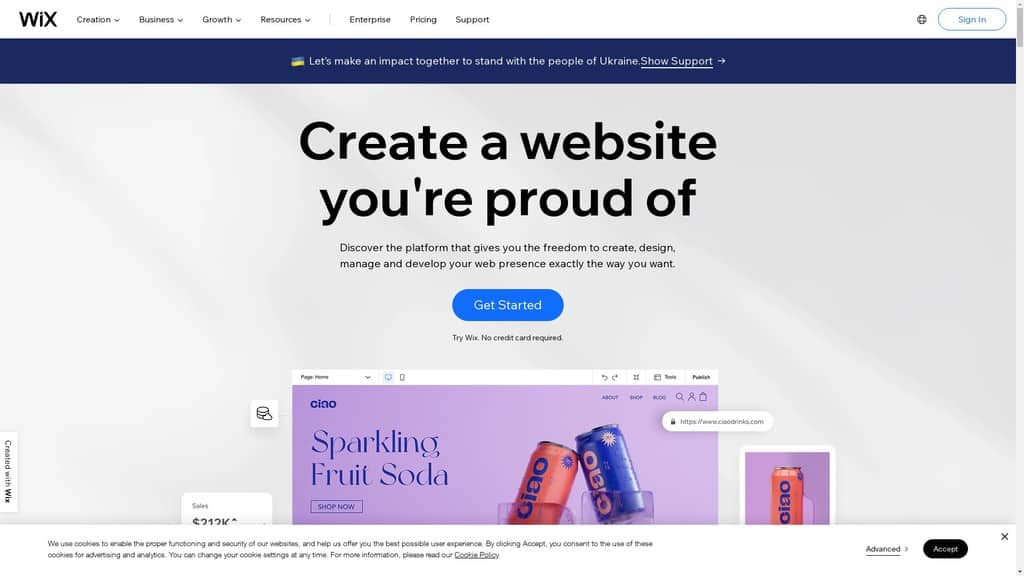There’s no denying that video content is extremely important.
Over one-quarter of people in 2020 reported that they watch more than 10 hours of video content per week.
Adding video content to your personal brand or marketing strategy is easy once you know about video platforms and what each one has to offer.

- You own the videos and hosting capabilities
- Videos will play ad-free to keep viewers focused

- Access to a large audience
- YouTube is the second largest search engine in the world
- Well-established advertising and monetization model
Contents
What Is an Online Video Platform?
An online video platform is a video hosting and video streaming website that allows users to create or upload their own videos.
Once hosted on the site, viewers can tune in to these videos to watch them.
Content creators can then continue with making videos or embed those videos on other websites, depending on the creator’s needs.
Many platforms also have live streaming services, which allowcontent creators to connect directly with their audiences.
This interactive video experience is different than just watching something prerecorded.
Why Are Videos Important?
Videos are important for creating engagement with an audience.
It’s a well-known phenomenon online that folks tend to skim through written articles rather than read them all the way through.
Videos can keep a viewer engaged for longer thanks to the visual element they offer over plain text on a webpage.
For example, if you’re looking to break down advanced concepts, you can leverage whiteboard video creation or motion graphics to make topics easy to digest.
How Do Online Video Platforms Work?
Online video platforms act as a storage and distribution center for uploaded videos.
When a user uploads a video, the platform stores that video in its servers that can be accessed by other users when clicking on the video.
Once selected, the platform streams the video to the connected user with a constant stream of data from the server.
That’s why a constant Internet connection is important for online video viewers.
Features of Online Video Companies
Many online video companies offer other services to content creators and viewers.
Some of those features include:
- Engagement and audience analytics
- Video API integrations for things like embedding
- Comment sections
- Monetization methods for content creators such as ad revenue and membership programs
- Livestreaming and other live audience features like text chat emotes and polling
Top 10 Video Platforms for 2022
With how many video platforms there are out there, it can be overwhelming trying to figure out where to start.
Here’s a list of our top 10 video platforms, each with different specializations and audience demographics.
1. iPlayerHD
Video Upload Guidelines
When you upload videos to iPlayerHD, you’ll need to follow these instructions:
- Minimum dimension: None
- Maximum dimension: None
- Aspect ratio: Depends on the video
- Max file size: No maximum, but storage is limited
- Max video length: No maximum
- Total file storage: 20 GB (Pro Plan) or 1000 GB (Pro Plan Plus)
- Accepted videos: AVI, MPEG, MPG, MPE, MP4, MKV, WEBM, MOV, OGV, VOB, M4V, 3GP, DIVX, XVID, MXF, WMV
Pros
The benefits of using iPlayerHD include:
- You own the videos and hosting capabilities, rather than relying on the platform’s ability to keep your videos around.
- The videos can be delivered via video player or embedded into websites, emails, and social media posts.
- The videos will always play ad-free and with no recommended or suggested videos to keep viewers focused.
Cons
With the focus iPlayerHD has on delivering ad-free content, it has a few downsides such as:
- Limited bandwidth means your videos are capped at a certain number of views per month.
- There is no unlimited storage plan, meaning businesses with large files or many videos will eventually hit that cap.
- iPlayerHD requires that businesses deliver the videos themselves as the videos are made private with no way to switch them off.
Best For
For businesses that want to deliver short videos as part of their email or social media marketing, iPlayerHD is a solid and inexpensive choice.
2. YouTube
Video Upload Guidelines
YouTube has stricter video requirements than other video platforms, so ensure you follow these guidelines well:
- Minimum dimension: 426 x 240 pixels
- Maximum dimension: 3840 x 2160 pixels
- Aspect ratio: 16:9, but has automatic conversion to 4:3 if needed
- Max file size: 128 GB
- Max video length: 12 hours
- Total file storage: Unlimited
- Accepted video types: MOV, MPEG, MP4, AVI, WMV, MPEG5, FLV, 3GPP, WEBM
Pros
YouTube offers several big benefits to starting a channel on their site, such as:
- Access to a large audience that can organically discover your content.
- A well-established advertising and monetization model that creators can use to earn a living.
- Backing from its parent company Google, the largest search engine platform in the world.
Cons
Still, YouTube has some downsides to it:
- Basing a business around YouTube requires years of work to grow a dedicated audience.
- Unoptimized for private video playback, making it a bad platform for sensitive information and training videos.
- The algorithm changes sometimes, causing different types of videos to come in and out of popularity due to search results.
Best For
YouTube works best for folks trying to draw in a bigger audience with their content.
Since most folks go to YouTube for entertainment and some light educational content, fitting into one of those niches as a business gives you another way to get your name out there.
3. Wix Video
Video Upload Guidelines
To upload a video to Wix, you’ll need to follow these guidelines;
- Minimum dimension: 480 x 470 pixels
- Maximum dimension: 1920 x 108- pixels
- Aspect ratio: Depends on the video uploaded/embedded
- Max file size: 15 GB
- Max video length: 10 minutes
- Total file storage: Variable, based on the subscription service you buy from Wix.
- Accepted videos: AVI, MPEG, MPG, MPE, MP4, MKV, WEBM, MOV, OGV, VOB, M4V, 3GP, DIVX, XVID, MXF, WMV
Pros
Wix Video offers several benefits to users of the platform, such as:
- Integrates well with the rest of Wix’s website building tools.
- Gives users the option to upload videos into a library or embed videos from other sources, saving space for Wix-specific videos in your storage.
- Offers live streaming and subscription services to reach your audience whenever and monetize videos
Cons
Still, there are some downsides to using Wix Video, which include:
- Reliant on organic traffic and subscriber engagement, meaning you have to promote your videos yourself.
- Videos are capped at 30 FPS, which is well below other popular video platforms.
- The free subscription only allows for 30 minutes of video to be saved into the library and requires the Business VIP plan to get unlimited video file storage.
Best For
For businesses that already use Wix to manage their website.
These businesses might also be on a paid subscription plan in the first place, giving them access to more video storage capacity out of the gate.
4. Instagram Reels
The second-largest video platform in the world, Instagram Reels is a short-form video platform that gives creators a way to deliver short videos to their followers.
It’s part of the Instagram ecosystem natively, meaning that folks browsing the site have a chance to come across the video put out by other content creators and businesses.
Video Upload Guidelines
Instagram Reels has very specific requirements for its videos, so read over this list carefully before you upload to the platform:
- Minimum dimension: 864 x 1080 pixels
- Maximum dimension: 864 x 1080 pixels
- Aspect ratio: 9:16 or 4:5
- Max file size: 15 MB
- Max video length: 30 seconds
- Total file storage: Unlimited
- Accepted video types: MP4 only
Pros
Instagram Reels offers unique features to help creators make videos, leading to these pros of using the platform:
- The Instagram app has some minor audio and video editing tools to make recording Reels easier, including picture alignment and AR tools.
- Reels go onto the Instagram ecosystem, a large platform thanks to its integrations with Facebook.
- Short videos are generally easier to record and make, meaning that a smaller amount of effort can have a big impact on brand awareness and discoverability.
Cons
Still, there is some downside to using Instagram Reels:
- Short videos don’t offer time to explain a concept well, meaning videos on the platform tend to be entertaining over educational.
- The platform only accepts MP4 files, which can be a problem for folks with gear that can’t record in that format.
- With how large the audience of Instagram is, it will take time and effort to build a following.
Best For
As with other Instagram features, Instagram Reels is best for individuals and small businesses to get their message out there.
Short videos don’t offer much time to talk about a topic, meaning short skits and promo materials work better than other video types on the platform.
5. TikTok
As another short video platform, Tiktok offers a lot of the same things that Instagram Reels does.
As a newer platform, its audience and direction are different than the previous example, giving TikTok an interesting niche to occupy.
Video Upload Guidelines
Much like Instagram Reels, TikTok has specific video requirements to upload to the platform:
- Minimum dimension: 1080 x 1920 pixels
- Maximum dimension: 1080 x 1920 pixels
- Aspect ratio: 9:16
- Max file size: 287.6 MB on iOS and 72 MB on Android
- Max video length: 60 seconds
- Total file storage: Unlimited
- Accepted video types: MP4, MOV
Pros
TikTok has some different factors that lend themselves to these pros:
- The platform attracts a younger audience, making it a great platform to get into for businesses reliant on teenagers and young adults for their market.
- Videos on this platform can be longer than Instagram Reels videos, letting the content creator better explain their point.
- TikTok comes loaded with a lot of preset filters and effects, meaning you might not even need to boot up a video editor program to make the clips you want.
Cons
Still, TikTok has a couple of downsides to using it, such as:
- Businesses not reliant on younger audiences won’t get much out of the platform.
- With no monetization options built into the program, content creators won’t get paid for their views on TikTok.
- Each video uploaded to the platform gets a TikTok watermark that can’t be removed.
Best For
Businesses looking to bring in a younger audience can stand to benefit from putting out the occasional TikTok.
Outside of that, the platform doesn’t seem to offer much to either businesses or content creators.
6. Vimeo
Video Upload Guidelines
Vimeo recommends that users follow these guidelines when uploading a video onto the service:
- Minimum dimension: 1280 x 720 pixels
- Maximum dimension: 1280 x 720 pixels
- Aspect ratio: 16:9
- Max file size: 3 GB
- Max video length: No limit if under the maximum file size
- Total file storage: 5GB (Vimeo Basic Plan) to 7 TB (Vimeo Premium Plan)
- Accepted video formats: MP4
Pros
As a business-focused platform, Vimeo has some features that lend itself well to use:
- The expansive library of templates and tools means that creating videos with Vimeo is simple and requires few outside resources.
- The platform lets you control your monetization and marketing tactics and works with businesses to create apps that reflex these choices.
- Between the support channels and the Vimeo School program, there are plenty of ways to learn about using Vimeo and how it can grow a business.
Cons
Still, there are some downsides to using Vimeo, such as:
- Vimeo is offered in many countries, but not in China. This fact means that businesses can’t stream video to citizens there, even for business purposes.
- Tools of this scale are helpful for many kinds of business, but won’t appeal to many independent creators or startup ventures.
- Video restrictions on video resolution and file type mean it can be difficult to get videos up without file conversion software.
Best For
For businesses looking to create video content that they can monetize, Vimeo is a great choice.
The tools that they offer give the content creators and businesses that work with the tools to build the infrastructure for their video business so that they can focus on making good videos.
7. SproutVideo
Keeping in the vein of B2B platforms, SproutVideo is another business-oriented platform that looks to offer video tools to businesses.
SproutVideo delivers video landing pages, market analytics and data, and customization tools to make creating video pages easy.
Video Upload Guidelines
To make a good-looking video for SproutVideo, you’ll want to follow these guidelines:
- Minimum dimension: Unreleased at this time
- Maximum dimension: Unreleased at this time
- Aspect ratio: Unreleased at this time
- Max file size: No maximum
- Max video length: No maximum
- Total file storage: 500GB, with the chance to buy more.
- Accepted video types: AVI, MPEG, MPG, MPE, MP4, MKV, WEBM, MOV, OGV, VOB, M4V, 3GP, DIVX, XVID, MXF, WMV
Pros
SproutVideo offers some useful features over its competitors, such as:
- Secure and unique login credentials for a handful of viewers to make remote training and HR guides possible.
- Marketing and security are at the forefront of SproutVideo’s features, meaning you can grow and secure your video content with their platform.
- The platform offers live streaming capabilities alongside its security features, doubling down on its ability to deliver secure video content while live.
Cons
Still, there are some cons to using SproutVideo, such as:
- Viewers can’t go through a library to find SproutVideo media, instead of requiring a direct link from the creators of the content.
- The platform has no monetization tools built-in, meaning your business has to have a way of converting customers without using the platform.
- Extra video storage has to be purchased, meaning it can be hard to build up expansive training video libraries without spending extra money each month.
Best For
SproutVideo is best for medium-sized companies looking to deliver videos in ways outside of embedding them in emails.
The website offers ways to create landing pages focused on video content and marketing those pages.
8. Dailymotion
Sometimes called “French YouTube,” Dailymotion is a video platform that focuses on viewers and creators, rather than businesses.
The nickname comes from the fact that the platform operates similarly to YouTube, but with fewer restrictions on the kind of content that can be posted to the website.
Video Upload Guidelines
Dailymotion operates similarly to YouTube when it comes to its video guidelines, so the list of guidelines will look familiar to YouTube experts:
- Minimum dimension: 426 x 240 pixels
- Maximum dimension: 3840 x 2160 pixels
- Aspect ratio: 16:9, with automatic conversions to other ratios as needed
- Max file size: 128 GB
- Max video length: 12 hours
- Total file storage: Unlimited
- Accepted video formats: MOV, MPEG4, MP4, AVI, WMV, MPEG, FLV, 3GPP, WEBM
Pros
Because Dailymotion differs in its tools and business practices from YouTube, it has some unique advantages over the popular video platform, such as:
- Tools to avoid copyright or privacy violations before uploading a video.
- Minimal content restrictions mean that a wider range of content and content creators can exist on the platform.
- Recent events with YouTube encourage viewers to seek out platforms such as these with more frequency.
Cons
Still, there are some downsides to using Dailymotion:
- YouTube still wins out in popularity, meaning that it’s hard to make a living off this platform alone.
- Dailymotion doesn’t have the same range of monetization and analytics tools as other platforms, making it harder to rely on this platform to grow a business.
- Fewer content restrictions mean that folks tend to view this platform as a less-than-savory place to go for videos.
Best For
For folks looking to create videos of all kinds and who don’t care about monetizing their videos, Dailymotion is great.
It’s got enough of an audience that you’ll get decent feedback on your content’s value without having to worry about the lack of business tools Dailymotion offers.
9. Muvi
For folks that want to launch a streaming service similar to Netflix or Hulu, Muvi can help with that.
The platform offers a range of tools that give experienced streamers a way to create a media library viewers can subscribe to and pay for.
Video Upload Guidelines
To give creators better control of their content, Muvi has pretty lax video guidelines:
- Minimum dimension: 256 x 144 pixels
- Maximum dimension: 3840 x 2160 pixels
- Aspect ratio: 16:9 and 4:3
- Max file size: No maximum
- Max video length: Unavailable at this time
- Total file storage: 1TB to 5TB, depending on your subscription plan
- Accepted video formats: MP4, MOV, MKV, FLV, VOB, M4V, AVI, 3GP, MPG
Pros
Because it operates as a streaming service toolset, Muvi has some positives to building with them that don’t exist for others:
- Video streaming and video storage for on-demand viewing are both big parts of Muvi’s operations.
- DRM and other security options all mean you can prevent your videos from being pirated off of the library.
- Apps created through Muvi all come with all-device streaming so viewers can tune in from anywhere.
Cons
However, you’ll want to keep these negatives in mind before signing up to use Muvi for your video content:
- Muvi apps don’t work in China, so you’ll miss out on that large market using this platform.
- Many external tools for analytics and video creation don’t work well with Muvi, forcing you somewhat into their toolset.
- Additional fees for extra storage and features can ramp up the price of the service.
Best For
Given its branding, Muvi is best for small media and entertainment companies looking to build up their own brand of streaming service.
Independent media creators will be able to create shows and videos that can be broadcast to their audience, no matter what niche they occupy.
10. Wistia
In the world of marketing, videos are critical to attracting viewers and converting them into customers.
Wistia knows this is the case, so they work hard to deliver services that will give businesses a way to share their marketing materials easily.
Video Upload Guidelines
Because marketing materials can come in many shapes and sizes, Wistia leaves video uploads pretty open:
- Minimum dimension: No minimum resolution
- Maximum dimension: 3840 x 2160 pixels
- Aspect ratio: 16:9 is the standard, but any aspect ratio works on the platform
- Max file size: 8 GB
- Max video length: 2 hours
- Total file storage: Up to 10 videos with a Pro Plan, but this number can be increased by paying more per video per month.
- Accepted video formats: MP4, MOV, AVI, WMV, FLV, MKV, 3GPP
Pros
Wistia has some big benefits for marketing videos, including:
- Video API access for each video to embed the video and track its viewership across multiple platforms.
- Advanced video analytics that breaks down the data you receive from the API further.
- Adaptive streaming bitrates and a customizable video player to make the video viewing experience better for every viewer.
Cons
Wistia has some drawbacks to it, however:
- With no live streaming tools available, this service doesn’t allow its customers to have live interactions within the platform.
- Like many other American-based platforms, Wistia can’t deliver videos to Chinese viewers.
- Advanced tech support is locked behind higher subscription tiers, meaning difficult tech questions can be tough to answer for inexpensive plans.
Best For
For businesses that do a lot of testing on their marketing materials, Wistia offers a lot of tools to help with gathering that data.
Combined with access to each video’s API, a business can use Wistia to develop their marketing strategies and get their message out to more folks.
How Video Platforms Can Help Your Business
Video platforms have a lot to offer to businesses.
Businesses can use videos to benefit them via several factors:
1. Increase Sales
Creating videos gives a business the chance to explain its product better than a product page could ever do.
A business can create compelling videos that explain what their product or service does and how it can benefit the listener.
2. Better Engagement
Social media is one of the main ways businesses can reach younger audiences.
To get the most engagement with their marketing, social media videos are best.
3. Boost Conversion Rates
Videos ultimately improve conversion rates.
Viewers will feel more comfortable in doing a call to action if they believe you’ve explained yourself well.
A video can do that well when combined with other solid marketing tactics.
What Should I Look For in a Video Platform?
If you’ve decided to get into video creation, then here’s a list of things to keep in mind when you decide on what platforms to sign up for:
1. Price
Ideally, a video platform won’t charge or cost anything for you to use it.
Many of the popular video platforms like YouTube and Dailymotion use ads and membership programs to generate revenue for the platform.
This means anyone can become a content creator for these websites.
For more advanced options, there might be additional monthly fees.
2. Key Features
To make the most out of your online videos, a good online video platform will have most or all of these key features:
- An integrated video player for streaming the uploaded video content.
- Video analytics like audience demographics, view counts, and like counts.
- Access to a content marketing or digital marketing service to get your videos registered as advertisements.
These features assume that you want to have your videos work as a marketing tool for a business.
3. Compatability
The platform that you choose needs to be compatible with the audience you have in mind.
Matching your target audience and video content will let your business maximize the benefits of video marketing.
Additionally, a business will want to ensure that they can create content that works for the platform.
A long technical explanation might do well on an enterprise video platform but won’t do as well on a short-form platform like Facebook Live.
4. Business or Personal Video Goals
Ultimately, each business or individual has a different goal they want to meet when making videos.
While an independent video creator might just be having fun, businesses tend to want to reach as many new customers as possible.
By researching different video platforms and learning what audiences and formats work best for them, a business can ensure that they can reach the audience they hope to with their video marketing.
Frequently Asked Questions
Here are some of the common questions out there about video platforms and their differences:
What Is the Best Video Platform?
The best video platform is the one that matches your personal or business’s goals.
It will take some research and experimenting to find the best place to reach your goals.
Is There A Video Platform Other Than YouTube?
While YouTube is the largest video streaming platform out there, there are plenty of other platforms you could choose to post with.
A live streaming platform like Twitch would let you connect with an audience directly, while platforms like Vimeo are better for creating professional-looking reels and short films.
What Is the Biggest Video Platform?
YouTube is the largest video hosting platform and video streaming platform out there right now.
The platform receives 2.3 billion unique users each month, making it the largest platform by a wide margin.
What Is the Second Biggest Online Video Platform?
After YouTube, Instagram is the largest video platform right now.
Many folks use Instagram to post short videos and live streams to their followers, making it great for small and independent content creators to get short content out to their followers for some fun and light-hearted engagement.
Wrapping Up
No matter which video platforms you use, they are a useful tool for growing your reach as a creator or business.
Using video content in your brand development includes knowing what different platforms can do for you.
Start by thinking about what kind of videos you want to make.
From there, see if any of these platforms match what you want to do.
Check out the platform’s website and get a feel for how it handles videos.
A little experience and know-how go a long way in delivering fun and informative video content.

